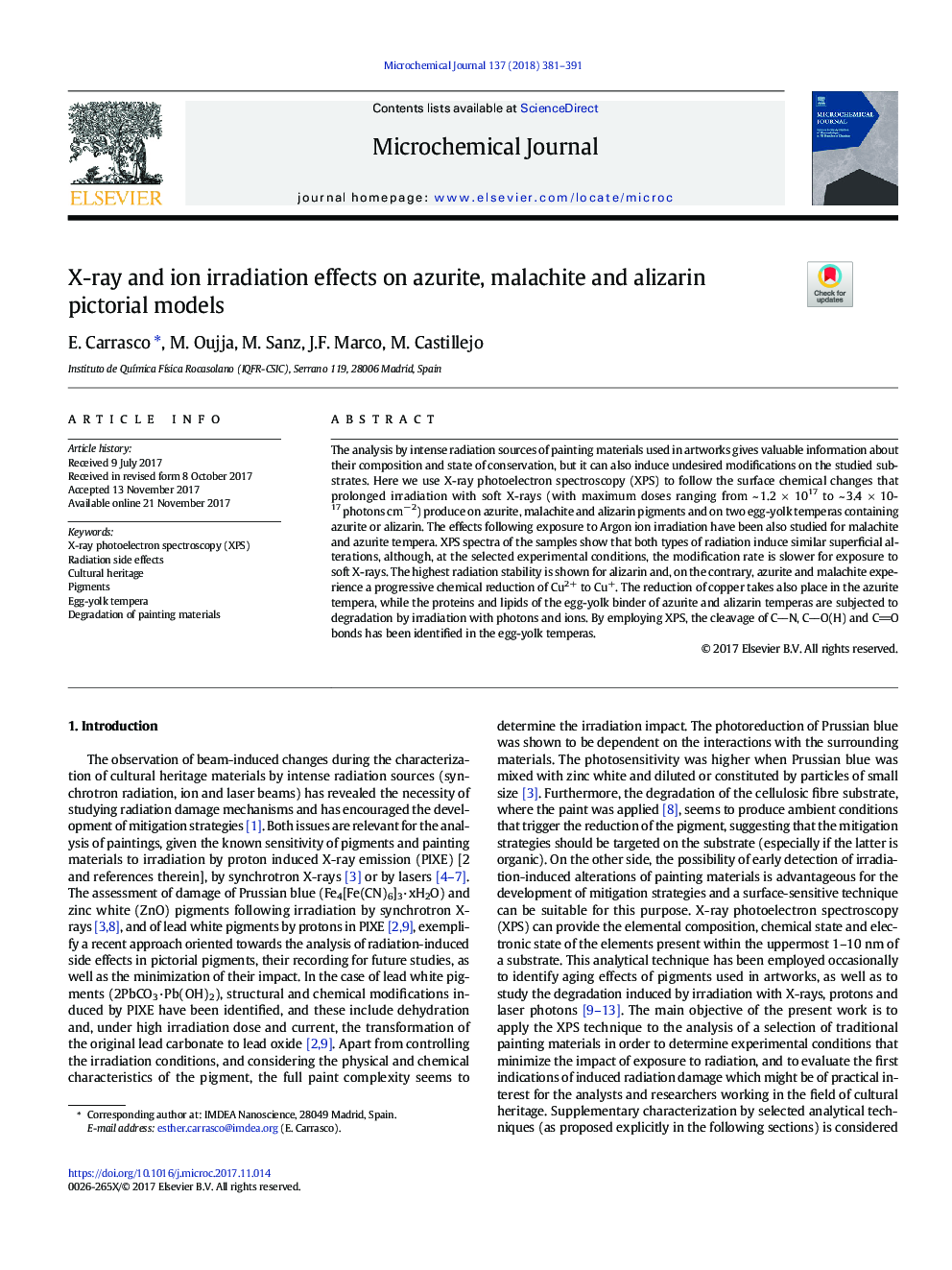| Article ID | Journal | Published Year | Pages | File Type |
|---|---|---|---|---|
| 7641019 | Microchemical Journal | 2018 | 11 Pages |
Abstract
The analysis by intense radiation sources of painting materials used in artworks gives valuable information about their composition and state of conservation, but it can also induce undesired modifications on the studied substrates. Here we use X-ray photoelectron spectroscopy (XPS) to follow the surface chemical changes that prolonged irradiation with soft X-rays (with maximum doses ranging from ~ 1.2 Ã 1017 to ~ 3.4 Ã 1017 photons cmâ 2) produce on azurite, malachite and alizarin pigments and on two egg-yolk temperas containing azurite or alizarin. The effects following exposure to Argon ion irradiation have been also studied for malachite and azurite tempera. XPS spectra of the samples show that both types of radiation induce similar superficial alterations, although, at the selected experimental conditions, the modification rate is slower for exposure to soft X-rays. The highest radiation stability is shown for alizarin and, on the contrary, azurite and malachite experience a progressive chemical reduction of Cu2 + to Cu+. The reduction of copper takes also place in the azurite tempera, while the proteins and lipids of the egg-yolk binder of azurite and alizarin temperas are subjected to degradation by irradiation with photons and ions. By employing XPS, the cleavage of CN, CO(H) and CO bonds has been identified in the egg-yolk temperas.
Related Topics
Physical Sciences and Engineering
Chemistry
Analytical Chemistry
Authors
E. Carrasco, M. Oujja, M. Sanz, J.F. Marco, M. Castillejo,
